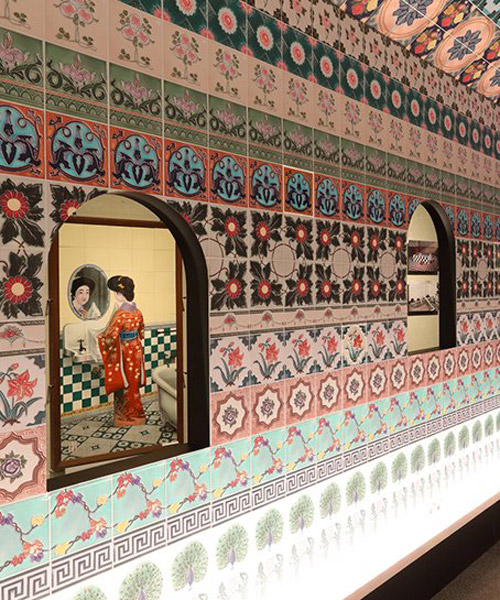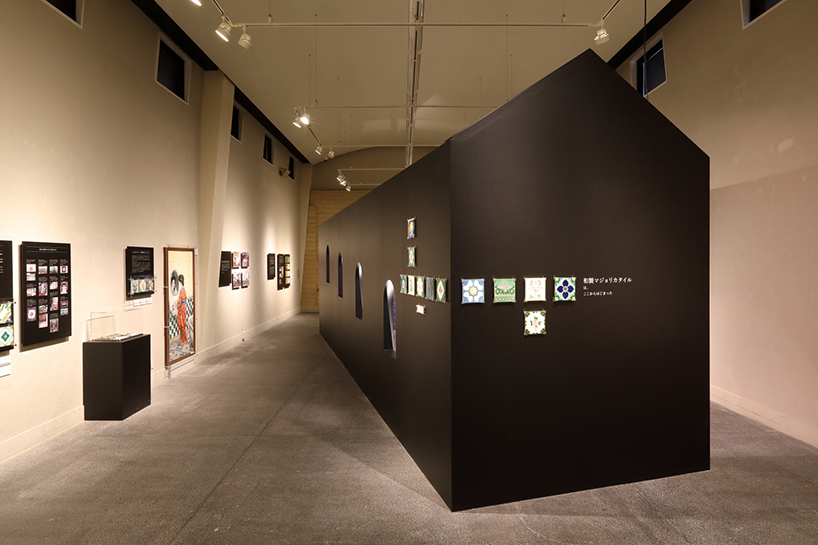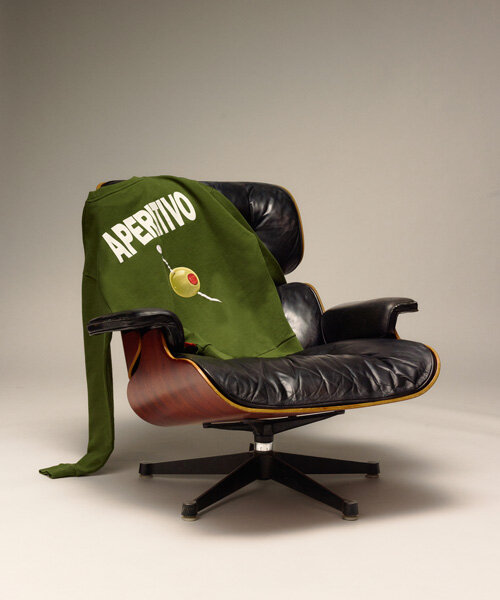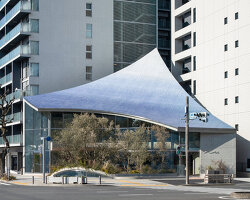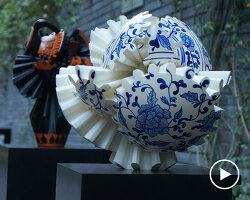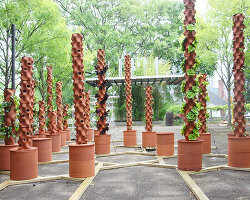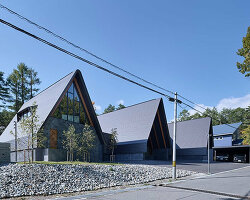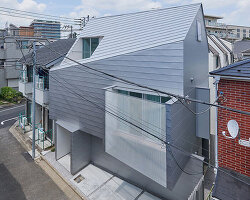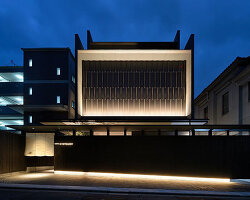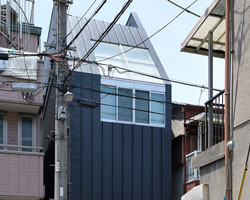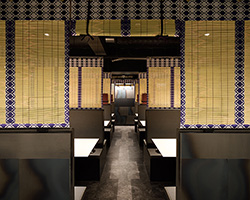the aim of GENETO studio’s exhibition project is to trace back to the history of the japanese majolica tile, which nowadays is exported mainly to asian countries. through the display of the ceramic pieces and historical documents, the architects want to encourage visitors to re-discover the uniqueness and beauty of the art.
the visitors can experience and appreciate the beauty and the uniqueness of tiles in the tunnel
the original tiles take inspiration from islamic culture, as they were produced in iberia peninsula before being exported to italy. in the late 19th century, people began producing victorian tiles in england which were later imported to japan where they were known as ‘majolica tiles’. at this time, they were exported not only to japan but also to other asian countries that admired the western architecture.
arched windows are positioned lower toward the end, creating a perspective in the space
designing the exhibition space, the team set three main themes: the history of the majolica tile, the influence of western europe, and showing the world filled by captivating majolica tiles. in order for visitors to understand the history efficiently, the black architecture with a pitched roof was installed in the center of the room, which could be seen as either a house or a castle, being positioned at an angle of 16 degrees. this divides the space into four sections and provides a circulating walking path for visitors to follow the history of the majolica tiles from chapter one to chapter four.

the uniqueness of majolica tiles can be experienced in a more tactile manner in the tunnel
through the classical western arched window, visitors can catch a glimpse, satisfying their curiosity about the content inside of the black piece. after passing through all of the chapters, they can enter the structure, where they can see beautiful tunnel covered completely with the printed tiles. in the tunnel, there is also a selection of tiles embedded in various places for visitors, both children and adults, to explore and touch the wall. in this space, the characteristics of the tiles such as their spacial sense, texture and surface can be experienced in a more tactile manner.
the black architectural structure in the center of the room brings a new perspective to the space
the black piece gently divides the space into four chapters
with documents and collection of existing tiles, visitors can learn the birth of majolica tile
the arched windows reveal the interior of the house
the world map at the end of the room shows the majolica tiles being exported worldwide

diagram

the tiles

plan

the tunnel
project info:
name: japan-made majolica tiles — trail of inspiration
designer: GENETO studio
location: INAX MUSEUMS, tokoname, japan
designboom has received this project from our ‘DIY submissions‘ feature, where we welcome our readers to submit their own work for publication. see more project submissions from our readers here.
edited by: maria erman | designboom
